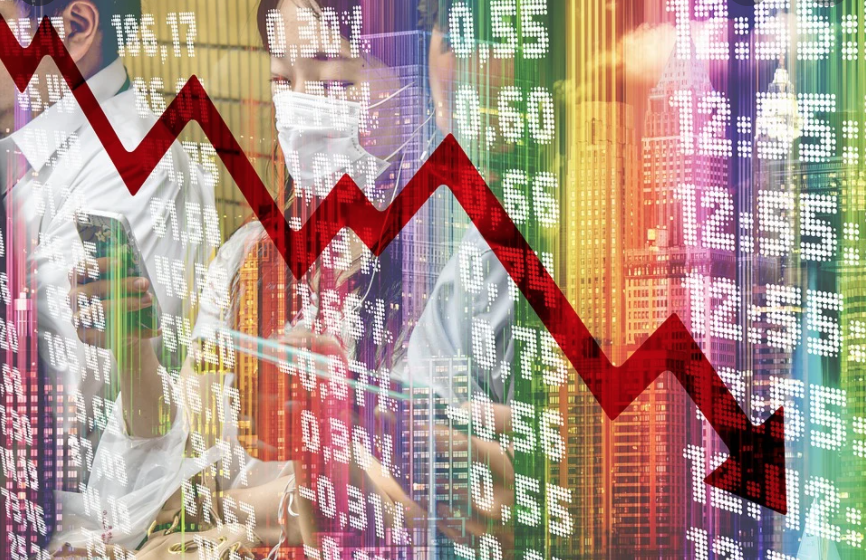How COVID-19 Has Affected the Economy
April 23, 2020
Before the recent COVID-19 outbreak, the United States economy nearly hit its highest peak in history. The time since has been nothing but a rapid downfall.
COVID-19 has heavily impacted many large businesses in the nation; taking possibly the biggest blow is the stock market. Prior to the outbreak, around late February, the Dow Jones Industrial Average was around the 30,000-point threshold. On March 16, 2020, it closed at 20,188.52, suffering a drop of 2,997.10 points (12.9%), the most extreme one since the “Black Monday” crash of 1987.
With social distancing expected to be the norm for an indefinite amount of months to come, the “freeze” of the economy is, too. The question of how—in light of a global recession—the economy can return to its pre-shock levels and growth rates while avoiding widespread bankruptcies is now being raised.
The stock market is not the only victim of this economic shock; small businesses are feeling the aftereffects, too. Most local businesses like restaurants, nail salons, and gyms subsist on a reliable flow of in-person customers that have now been cut off. Without their services being in use, money can’t be made and rent can’t be paid.
Some major businesses have discovered alternatives that fit within the bounds of social distancing while also maintaining a steady flow of business. Many restaurant chains are offering free delivery to make up for the closure of dining rooms. Chipotle, a Mexican grill, was the first to jumpstart a free delivery system on orders over $10. They announced it on March 12, 2020, and many other restaurants, including Wendy’s and Jersey Mike’s Subs, have followed in the same path.
Most of these contactless services include a tamper-evident seal on the food and various limited-contact delivery options, like pick-up outside of the building along with free delivery. These offers are limited and will end soon.
Many local businesses have similarly turned to technology to simulate the in-person interactions their services usually require.
Small business owner Miri Greenberg’s brand as a fitness instructor branches from teaching pilates and barre classes from her home in Tenafly to teaching weekly classes at three different locations of major gym chain Equinox in New York City. As the threat of the virus increased, she stopped her classes at Equinox as a precautionary measure and moved to teach from home full-time. This was before social distancing and quarantine were mandated.
Trainers make their living from helping their clients exercise in person: giving them a routine, adjusting their form, and offering constant encouragement. Greenberg, along with many other leaders in the field, has taken to online platforms like Instagram and Zoom to deliver her workouts to clients.
Greenberg shared her insight on the two platforms in an interview.
“Instagram really reaches out to more people,” she says, but acknowledges that Zoom has its advantages, too. “In Zoom, what I love about it is I can actually interact with the people that I’m teaching. I see them, I can talk to them while I’m teaching them; it’s like having them in my studio but without touching.
“I can tell them what to do and how to do it right, how to perform the exercise right, versus on Instagram, the only way we can connect is messaging me while they are working out,” Greenberg explains.
Both online settings, despite their different pros and cons, offer the same opportunity to reach a client base. However, with almost all of the fitness world making the switch to technology in this exact way, the selection of classes to choose from is varied exponentially for users.
“In the first week when I started to put online classes on Instagram, we used to have 200, or a little bit more than 200 people watching us,” Greenberg recalls. “This is the third week in a row, and it went down tremendously. For others, too. The amount of classes that are offered online, it’s enormous, so people need to choose which one they want to take. So right now we’re under the 100,” Greenberg adds. The more fitness businesses that join this movement, the less business they will receive individually. However, Greenberg reflects, as long as she can continue spreading wellness to others, she is content.
The durability of these technologically-leaning solutions is unknown. Businesses, small or large, will have to maintain flexibility and keep adapting as the situation evolves. Their survival is essential to the economy as a whole.


